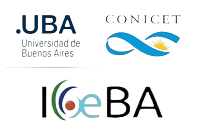Fermin Palma, Luana Acosta, José Isola, Federico Esteban & Alejandro Tassone
2 025
Geo-Marine Letters, Volume 45, article number 22, (2025)
This study presents the first surficial sediment zonation based on an analysis of backscatter data and sediment samples acquired during the YTEC-GTGM0 and AMPY1 (2017 and 2022, respectively) aboard the R/V Austral. Data were collected using a Kongsberg EM122 echosounder operating at 12 kHz, covering a 3882 km2 area that includes the Sloggett Submarine Canyon and its interfluve with Valentín Submarine Canyon, located within the ‘Yaganes Marine Protected Area’ in the Tierra del Fuego Continental Margin. A 75 × 75 m grid was generated from the backscatter data, and both supervised and unsupervised clustering algorithms were applied, resulting in four distinct acoustic groups. A qualitative analysis was performed to evaluate the suitability of each clustering method for dB value determination. The acoustic groups were then validated using nine surficial sediment samples collected from the study area. The results demonstrate a strong correlation between the extreme values of the dB scale and sediment types: lower dB values (< -26 dB) correspond to fine-grained sediments (silt and sandy silt), while higher dB values (> -18 dB) correlate with coarse-grained sediments (sand and gravel). However, intermediate dB values show poor correlation with specific sediment types, likely due to the influence of mixed sediments and geomorphological factors such as seafloor slope and subsurface layering. Notably, the seafloor slope above 7° was found to significantly influence backscatter values, highlighting the complexity of acoustic interpretation in steep environments. This study provides the first detailed classification of geohabitats in the AMPY, enabling the creation of a map that reveals three main seafloor types: fine-grained, mixed-grained, and coarse-grained that were associated with soft muddy, mixed, and hard and rugged geohabitats. The findings underscore the utility of backscatter data for seafloor characterization, particularly in extreme dB ranges, while also highlighting the challenges of interpreting intermediate values. This work contributes to a better understanding of the benthic environment in marine protected areas, supporting future conservation and management efforts.
